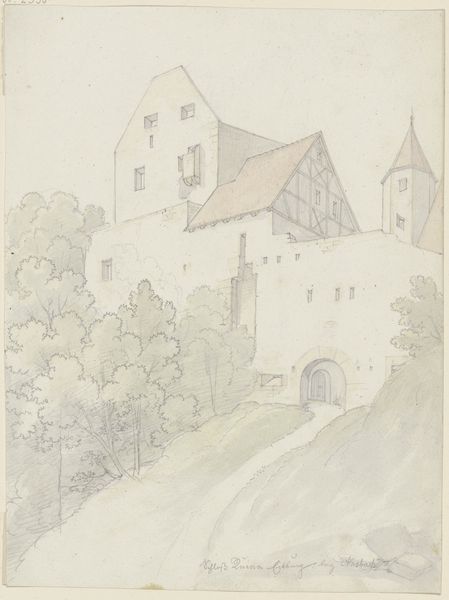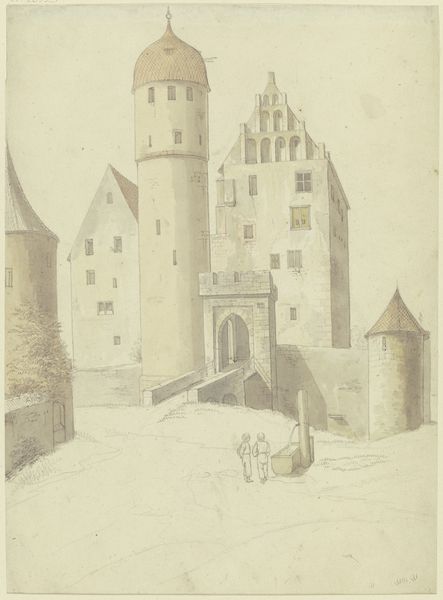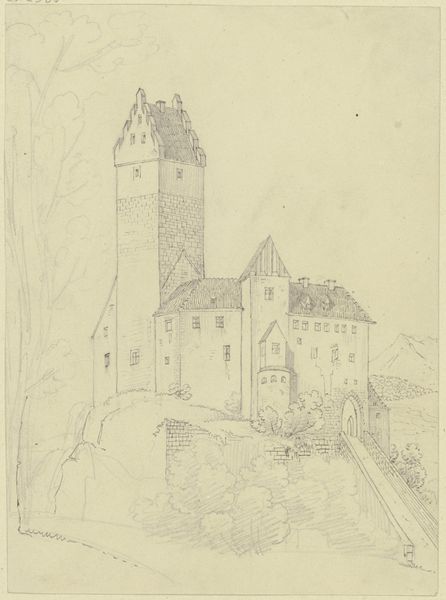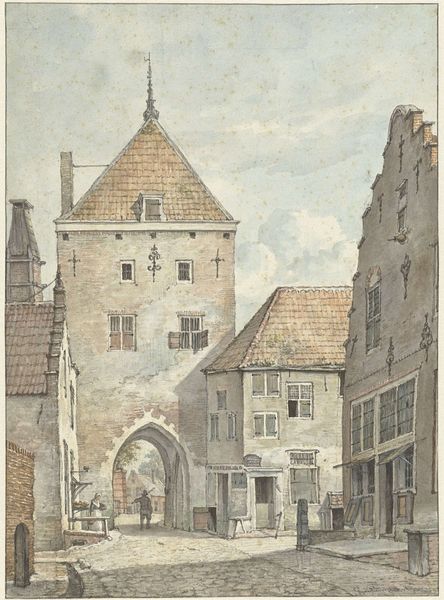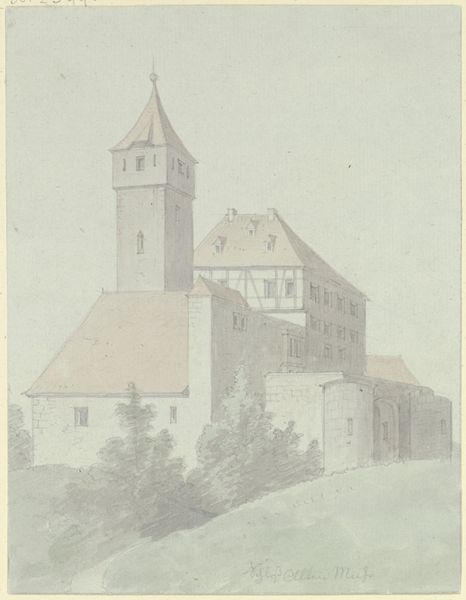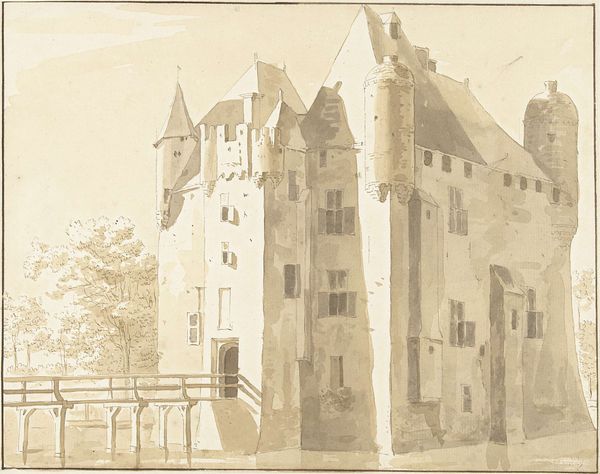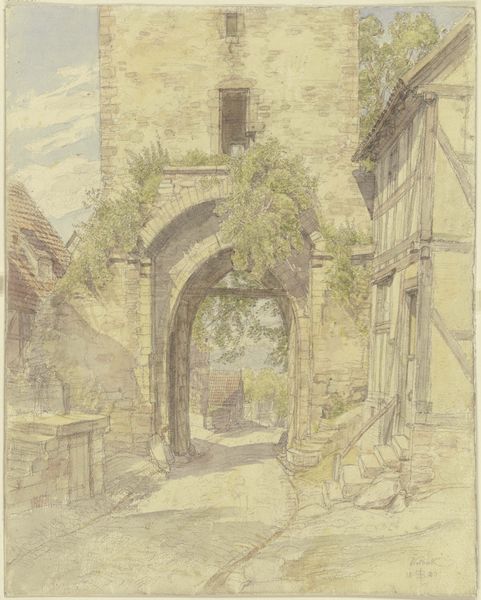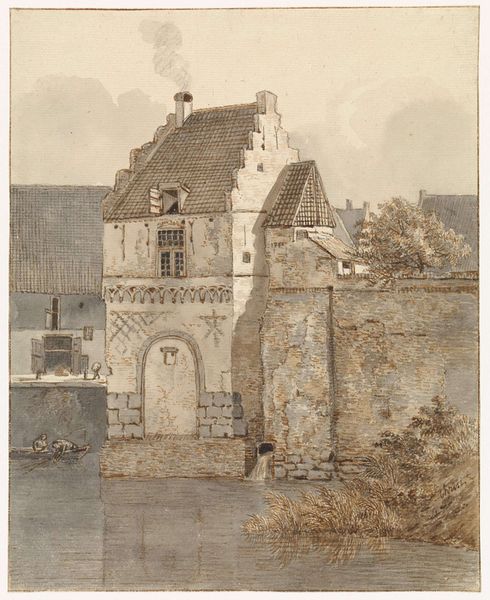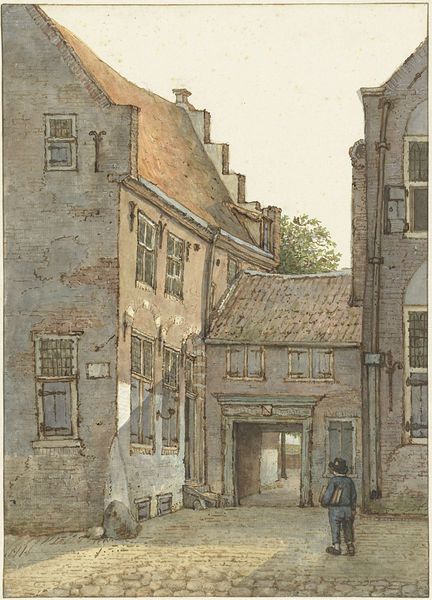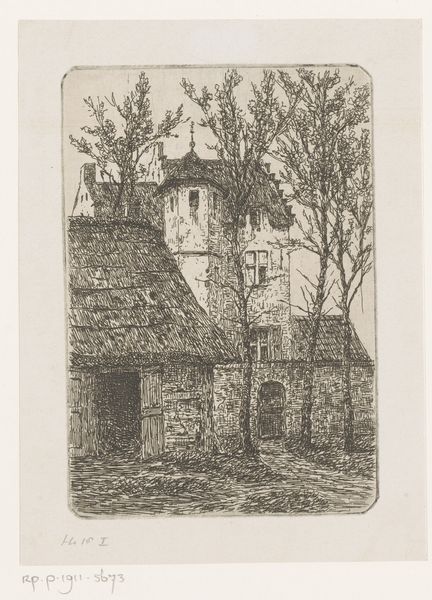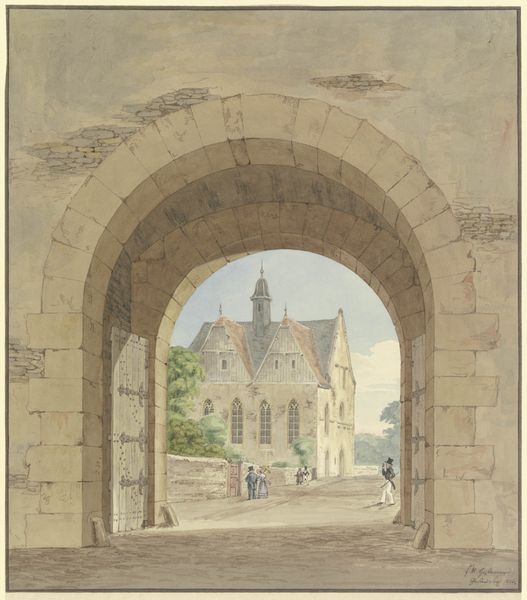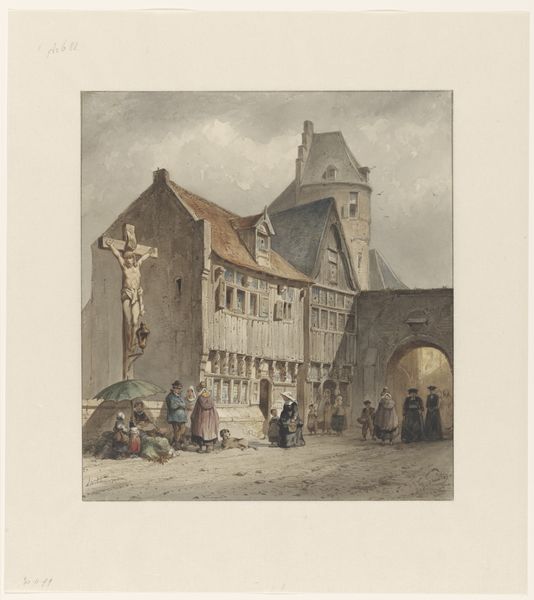
drawing, painting, paper, watercolor, ink, indian-ink, architecture
#
drawing
#
painting
#
landscape
#
paper
#
watercolor
#
ink
#
coloured pencil
#
indian-ink
#
cityscape
#
watercolor
#
architecture
#
realism
Copyright: Public Domain
Curator: Here we have Karl Ballenberger's "Innenhof der Burg Colmberg," a watercolor and ink drawing currently housed here at the Städel Museum. Editor: It's funny, it gives off this immediate impression of hushed secrets and untold stories, like a stage set for a ghostly play. The almost monotone washes feel both historical and melancholic. Curator: The materiality contributes, wouldn't you agree? The combined use of watercolor, ink, and pencil on paper allows for a layering that's key to depicting architectural detail. Consider how Ballenberger emphasizes the stones, the roofs; each structural component given texture. Editor: Yes, texture is paramount. Look how he's delineated the wear and tear, the tiny dramas etched on every brick. I almost feel I can hear the echoes in the courtyard, but I would also like to know more about how accessible, physically or economically, paper, colored pencils and indian ink were to the artist in that time, and whether that might impact what he choses to focus on within this scene. It seems like luxury but could actually be all that was at hand! Curator: Good point. Understanding what was at the artist’s disposal impacts any art interpretation. If paper wasn't commonplace, his focus on architectural facades might speak volumes about his engagement with civic society versus pastoral romanticism, for instance. Editor: It invites a broader conversation around what gets deemed worthy of art, particularly within realistic depictions of buildings versus portraits of power. It makes me wonder how that system influenced this Burg Colmberg and how buildings in that period reinforced class distinctions or other such things. What's his relationship to this space? Was this commissioned? Did he have free range? That would determine his subject matter! Curator: Exactly. Such buildings symbolize control. In essence, even seemingly passive scenes conceal complex labor processes of construction and maintenance – stories hidden within plain sight. Editor: Food for thought for me, and for anyone wandering around it! This place seems less like a pretty view than a witness of life as lived, and labour as endured, really. Curator: Agreed; materiality unveils narratives far beyond surface beauty.
Comments
No comments
Be the first to comment and join the conversation on the ultimate creative platform.

